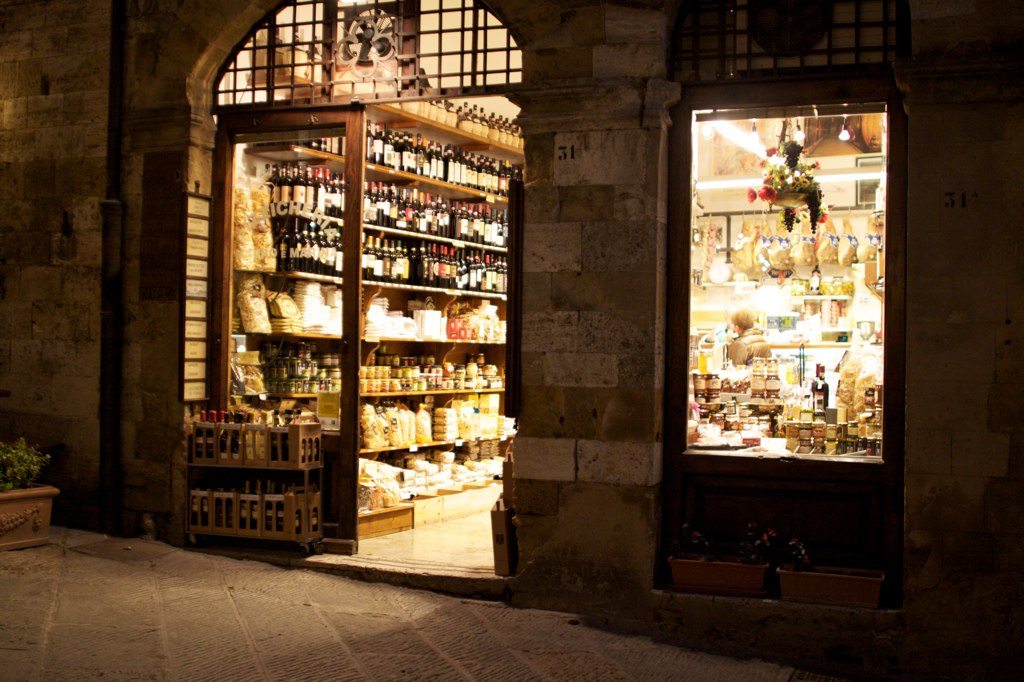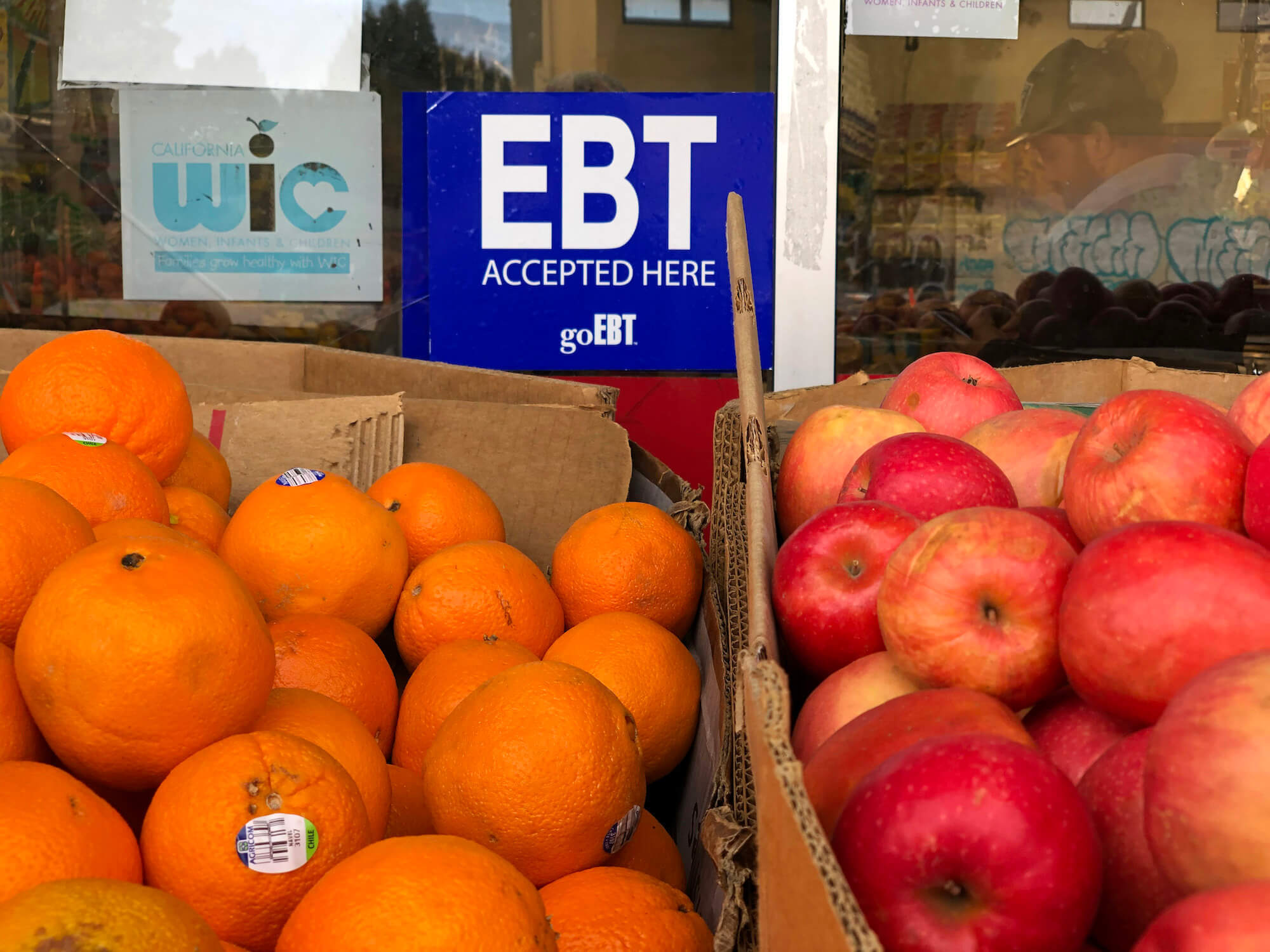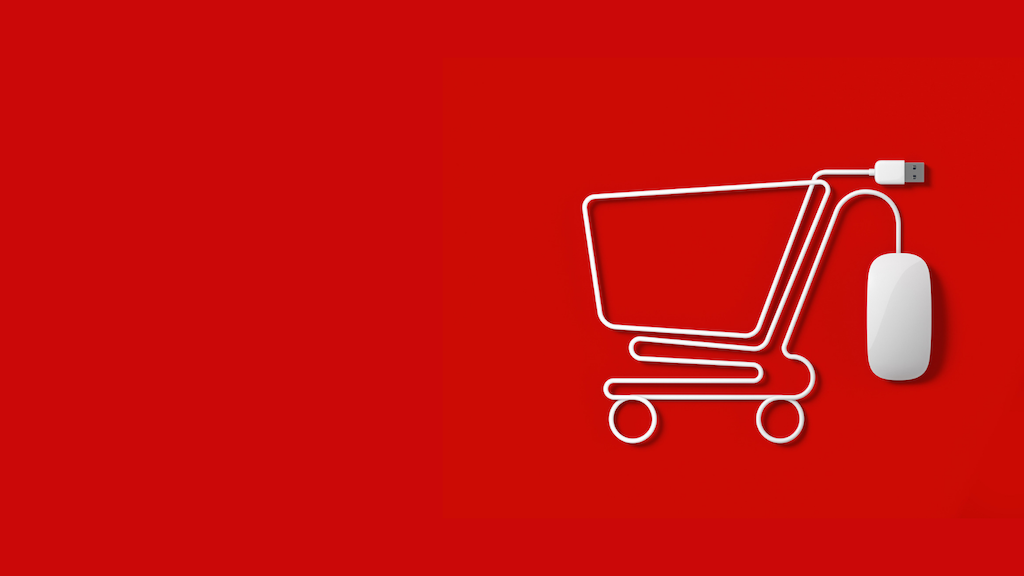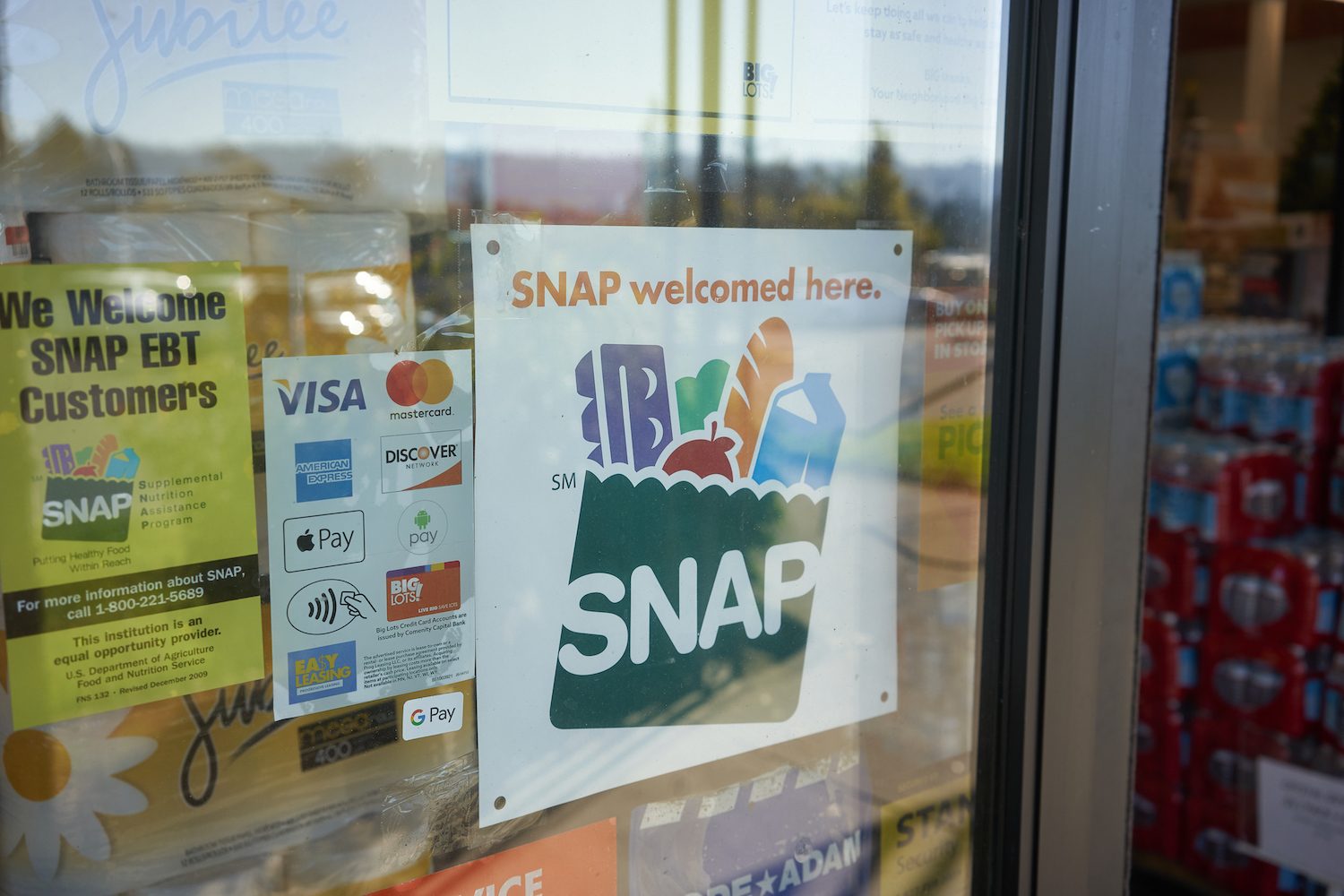
Hannah Weinberger/Crosscut
Using food stamps to grow produce could prove useful if more people—and retailers—knew about it.
Pictured above: Many grocery stores set up to accept SNAP benefits, such as the Fred Meyer in Greenwood, sell seeds and food-bearing plants eligible for purchase through that program.
Home gardener Maggie Slighte was thrilled to discover that she could use food assistance program benefits to purchase seeds and food-bearing plants nearly 20 years ago. Slighte, who is lower-income and lives in Olympia with ADHD, autism and Ehlers-Danlos syndrome, has been dialing in her strategy for growing food to feed herself and her family ever since.
Many people know that the U.S. Department of Agriculture Supplemental Nutrition Assistance Program, or SNAP, known colloquially as food stamps, makes it possible for more people to buy food at the grocery store. Households at or below 200% of the federal poverty level or making about $4,400 per month for a family of four, can use their SNAP benefits to purchase milk, bread, vegetables and various other food products. Immigrants may be eligible for the State Food Assistance Program, which offers the same benefits as SNAP.
But fewer people know that these benefits can help them grow their own fresh produce, according to people involved in King County gardening nonprofits and the SNAP program itself.
More area residents have become eligible for food assistance in the pandemic, and even more are expressing interest in sustainable living practices, like home and community gardening. The number of King County households enrolled in SNAP increased from 10.7% of households in February 2020 to 11.6%, or 106,105 households, as of December 2021. The most recent demographic data, for applications between March and August 2020, show that 20% of applicants were new to the benefits. Many enrollees are people of color.
As locals look for ways to make their families and communities more resilient to economic and ecological stresses, it has become more important to highlight ways to acquire seeds and other gardening resources below cost, equitable gardening experts say.
Old but misunderstood option
Many of the ways people acquire seeds and plant starts below cost in King County are “grass roots, no pun intended,” says Missy Trainer, coordinator of the Haller Lake P-Patch Giving Garden. But the opportunity to use government assistance for gardening has been around since 1973, when the Food Stamp Act was amended to include “seeds and plants for use in gardens to produce food for the personal consumption of the eligible household.”
Supplementing your diet with homegrown food can be economical. “For the same price as a large tomato, someone could buy a packet of seeds or plant start that would ultimately yield more fruit,” says Kerri Cacciata, market programs director of the Tilth Alliance’s Rainier Beach Urban Farm & Wetlands.
Better yet, Tilth’s Laura Matter notes that once you’ve grown a fruit like a tomato, you can save its seeds for future use. The SNAP program “provides low cost supplies for growing produce that is worth much more when fully grown and harvested. People are excited to eat what they grow,” Matter says.
King County residents can use SNAP at food banks, grocery stores that sell seeds, convenience and drug stores, as well as at farmers markets, where they can use the MarketMatch program to double the value of their SNAP benefits. They can also use their benefits at online retailers.
“For the same price as a large tomato, someone could buy a packet of seeds or plant start that would ultimately yield more fruit.”
But it’s unclear how many people actually use or benefit from the SNAP program’s inclusion of seeds and food-bearing plants.
“I hope people know that they have that option,” says Angela Amico, a state Department of Social and Health Services-affiliated program manager of SNAP-Ed, a 30-year-old program that supports people eligible for SNAP benefits in eating healthfully and staying active.
Amico, who helps people make SNAP purchases go further, says she’s not sure the ability to use benefits to purchase seeds and starts is well known. Gardening is becoming more a part of the SNAP-Ed curriculum; SNAP-ed also involves partners like Washington State University and the Lummi Tribal Health Center in gardening and seed distribution efforts.
Neither the USDA Food and Nutrition Service nor the state Department of Social and Health Services tracks SNAP-related spending on seeds and plant-bearing starts. The most recent USDA data for SNAP expenditures nationwide also do not include them as spending categories, but it does show 0.3% of assistance went to “miscellaneous” spending.
After years of growing food for food banks through the local Giving Gardens nonprofit, Seattle resident Alexandria Soleil DeLong found themself in a position to use SNAP benefits for 15 months and patronize food banks.
“I didn’t feel like there was like a ton of information about what I could purchase,” says DeLong, a soil health and food justice advocate who until connecting with Crosscut did not know that they would have been able to use their SNAP benefits to purchase seeds and starts.

Edible plant starts are for sale at area grocery stores like Fred Meyer in Greenwood. These plants, as well as seeds that produce food, are eligible for purchase with federal assistance through the SNAP program.
Hannah Weinberger/Crosscut
Some groups that sell seeds and food-bearing plants say the option is being used. Through her work at Tilth, Cacciata says she has had a number of people purchase edible plant starts — broccoli, beets, leafy greens and beyond — with SNAP benefits at events like Tilth’s annual Edible Plant Sale and the seasonal farm stand.
Locals like Slighte are so passionate about this option that they make instructional videos to share online as a way to expand awareness of it. Using online platforms like TikTok, Slighte — under the handle @NeurodivergentGranny — shows people how to double the value of their SNAP benefits at farmers markets, where she purchased tomato plants last year, from which she saved seeds for future harvest. Even during the winter, the foods she harvested and dehydrated from her first year of having a “major” patio garden provide about 10% of her food, she says. In the early fall, she was able to grow about 30% of her own food.
DeLong says the process of using SNAP at farmers markets can be awkward, involving tokens and Monopoly-style money. “I want to use the state’s money at the farmers markets to support local farmers. But it’s really just like a strange belittling interaction,” they said.
Not every seed and start retailer participates in this program, let alone realizes they might, which can add to the awkwardness of trying to use SNAP benefits for gardening. Cacciata says grocery stores are more likely than nurseries or garden centers to accept SNAP, since they already handle food purchases made with SNAP, but even grocery clerks might not know it’s a viable option.
“If you’ve got cashiers that don’t understand that you can do that, then you’re met with an immediate barrier, immediate judgment. And so all your plans are completely thwarted before you even start,” Slighte says.
Aimée Damman, director of marketing and communications at Swansons Nursery, says she doesn’t know of anyone who has used SNAP to purchase seeds or plants. While the nursery donates plants to the Ballard Food Bank and seeds to the Giving Garden Network, among other organizations, it doesn’t accept SNAP. “I don’t think [the option] is very widely known,” she says. “We haven’t had any demand.” If demand arose, Swanson’s would need to adjust its sales technology, and may actually have to offer more food-related items to even become eligible to accept SNAP benefits.
Urban Feed & Garden in Beacon Hill doesn’t accept SNAP benefits, but General Manager Risa Wolfe says she thinks using the benefits on seeds and starts sounds like a great idea. Urban Feed & Garden donates seeds to community gardens, and donated about $1,200 worth of seeds to Nurturing Roots last winter. She thinks her staff would be willing to accept SNAP benefits, but no one affiliated with SNAP has reached out to educate the staff on the business side of the program. “If somebody came to me with SNAP benefits, I wouldn’t know what to do,” she says.
Other hurdles to growing food
Once someone has seeds in hand, they need gardening maintenance supplies, time to garden and container space or land.
“Land access is the big one,” Matter says, stressing the importance of accessible community gardens. “Time to garden can be an impediment, but if folks have growing space at their home or nearby, this makes it more practical.”
“You could get a pack of carrot seeds, but if you don’t have land for the carrot to grow into it, then it’s not really worth much,” adds DeLong.
People in King County have unequal access to these resources. Backyards are increasingly scarce, not all multifamily housing residents are able to grow plants in containers or on roofs, and while Seattle’s P-Patch program makes many acres of land available to the community for gardening, including food gardening, the P-Patches can have yearslong waitlists.
People also need educational resources to be successful. In addition to distributing fresh fruits and vegetables, a number of local organizations also provide gardening education, including Tilth Alliance, The Beet Box, Solid Ground, Nurturing Roots Farm, Black Star Farmers and the Black Farmers Collective’s Yes Farm.
“When you use SNAP benefits for gardening, you’re experiencing a type of self-sufficiency that you don’t get to experience when you’re low-income.”
The King County Seed Library system and Plant Based Food Share also share seeds and starts.
Bill Thorness, coordinator of the seed library, says the popularity of gardening during the pandemic reduced the seed library’s seed supply. “Because the seed companies have been so busy, we haven’t had as many donations. And part of our model includes holding seed swaps where gardeners can bring seeds to share, but we haven’t done that for two years. We are talking about holding an outdoor one this spring,” he says.
Some food banks also share seeds. Mara Bernard, the community farms and facilities manager of the White Center Food Bank, says the food bank last year distributed 4,000 seed packets and 2,000 plant starts.
In Slighte’s experience, growing any amount of food with whatever space and time people can find during a time of great anxiety is valuable for producing more than just fresh produce.
“When you use SNAP benefits for gardening, you’re experiencing a type of self-sufficiency that you don’t get to experience when you’re low-income,” Slighte says. “And it’s that nontangible benefit that is so incredibly helpful to your mental health.”
Update: This article was updated at 12:38 p.m. on March 3, 2021, with language clarifying that many nurseries and plant stores may not currently be eligible to accept SNAP benefits. The program as it stands requires retailers to qualify based on either providing a certain number of food products, or making a certain amount of revenue from selling food products.






